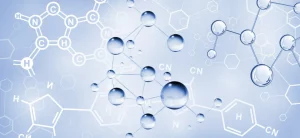surfactant
Definition of surfactant
The word “surfactant” in English is a synthetic word consisting of surface active agent (surface + active + agent). In the surface layer of a liquid, there exists a kind of macroscopic tension that makes the liquid surface shrink into as small as possible, i.e. surface tension. Reducing surface tension is the basic function of a surfactant. As shown in the figure below, when a surfactant is added, the surfactant reduces surface tension by forming a thin film on the surface of the liquid and changing the arrangement of molecules on the surface of the liquid. The fact that surfactants have the ability to reduce surface tension gives them many uses, such as emulsification, wetting, solubilization, dispersion and foaming. Surfactants are widely used in cosmetic, chemical,
![]()
pharmaceutical and food industries. In preclinical formulation development, surfactants can improve drug solubility, form micelles or antimicelles, and are also an important component of lipid formulations. In addition to improving the solubility of difficult-to-solve drugs, surfactants can also act as p-gp inhibitors and inhibit p-gp efflux, thereby improving oral bioavailability.
In terms of chemical structure, surfactants are amphiphilic molecules that contain both a hydrophilic region and a hydrophobic region, usually with a hydrophilic head and a hydrophobic tail (i.e., lipophilic). The following figure shows the chemical structure of Tween 80 and Span 80. As can be seen from the structural formulae, their molecules can be divided into two parts, the hydrophilic region and the hydrophobic region. The hydrophilic region contains a large number of hydroxyl groups, while the hydrophobic region is a long chain of aliphatic hydrocarbons.
Classification of surfactants
Surfactants can be classified into four main types according to their chemical structure: (1) Anionic Surfactants (Anionic Surfactants); (2) Cationic Surfactants (Cationic Surfactants); (3) Nonionic Surfactants (Nonionic Surfactants); (4) Amphoteric Surfactants (Amphoteric Surfactants).

Surfactants (Amphoteric (Zwitterionic) Surfactants). Different types of surfactants have different properties and should be considered when selecting them. Commonly used surfactants in preclinical preparations are Tween 20 (polysorbate 20), Tween 80 (polysorbate 80), polyoxyl 35 hydrogenated castor oil (Cremophor EL), polyoxyl 40 hydrogenated castor oil (polyoxyl 40 hydrogenated castor oil, Cremophor EL), and polyoxyl 40 hydrogenated castor oil (polyoxyl 40 hydrogenated castor oil, Cremophor EL). (polyoxyl 35 hydrogenated castor oil, Cremophor EL), polyoxyl 40 hydrogenated castor oil (Cremophor RH 40) and so on. Nonionic surfactants are more commonly used in preclinical formulations because of their higher safety profile compared to ionic surfactants. The amount of nonionic surfactants can go up to 5% or even higher, whereas the amount of ionic surfactants is relatively low, usually less than 1%.
![]()
Ind. Eng. Chem. Res. 2022, 61, 1, 21-64. Publication Date:January 3, 2022
The more commonly used anionic surfactants are sodium dodecyl sulfate (SDS) or sodium lauryl sulfate (SLS).
The more commonly used cationic surfactants are cetyltrimethylammonium bromide (CTAB) and others.